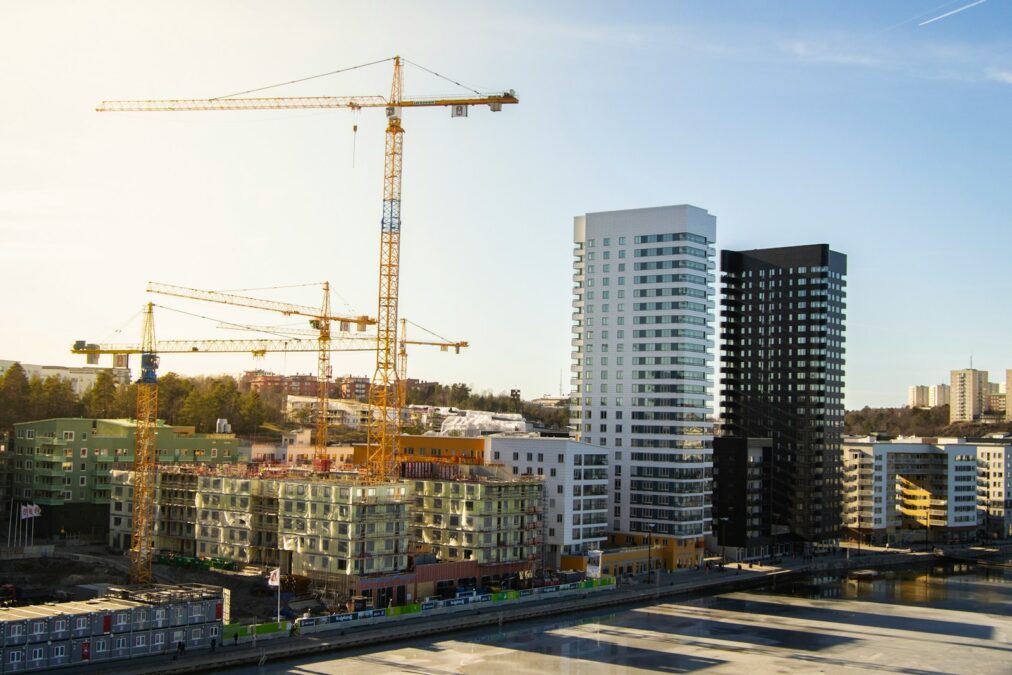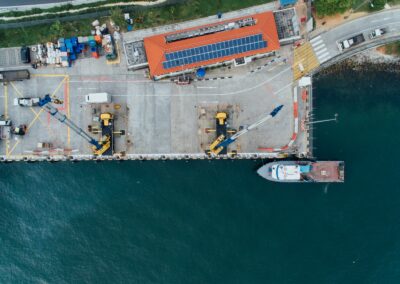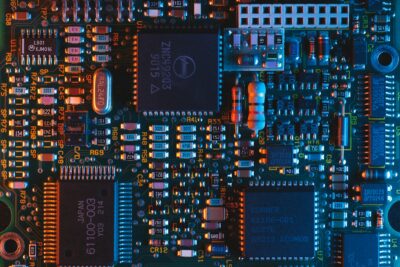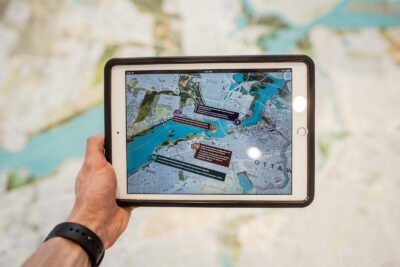Advancements in Detect-and-Avoid Systems for UAVs: A Leap Towards Safer Skies
Introduction to Detect-and-Avoid Systems
The development of Detect-and-Avoid (DAA) systems for UAVs marks a significant advancement in aviation technology. These systems are crucial for ensuring that unmanned aerial vehicles (UAVs), commonly known as drones, can operate safely by detecting and maneuvering around other aircraft or obstacles. In recent years, cities like Riyadh and Dubai have become hubs of technological innovation, embracing the potential of DAA systems to enhance their airspace safety. The integration of DAA technology in UAVs not only promises safer skies but also opens new possibilities for various industries, including logistics, surveillance, and emergency response.
The significance of DAA systems lies in their ability to provide UAVs with autonomous collision avoidance capabilities. Traditional UAV operations heavily relied on pre-programmed flight paths and manual remote control, which limited their operational flexibility and safety. With the implementation of advanced DAA systems, UAVs can now dynamically assess their surroundings and make real-time decisions to avoid collisions. This technological leap is particularly vital for urban environments like Riyadh and Dubai, where the airspace is becoming increasingly congested due to the rising number of drones used for commercial and recreational purposes.
The development of DAA systems involves the integration of various sensors, including radar, LIDAR, and optical cameras, to provide a comprehensive situational awareness. These sensors work in unison to detect potential obstacles, assess their trajectories, and compute optimal avoidance maneuvers. Furthermore, advanced algorithms and artificial intelligence (AI) play a pivotal role in enhancing the decision-making process of these systems. By leveraging AI, DAA systems can learn from past encounters, continuously improving their performance and reliability over time.
Impact on Aviation Safety and Operational Efficiency
The introduction of detect-and-avoid systems for UAVs is poised to revolutionize aviation safety, particularly in regions like Saudi Arabia and the UAE, where rapid technological adoption is a priority. These systems significantly reduce the risk of mid-air collisions, which has been a major concern for both manned and unmanned aircraft operations. By enabling UAVs to autonomously navigate complex airspace and avoid obstacles, DAA technology ensures that drones can operate safely alongside traditional aircraft, contributing to a more efficient and secure air traffic management system.
In addition to enhancing safety, DAA systems also improve operational efficiency for businesses relying on UAVs. Industries such as logistics and delivery, which are rapidly expanding in cities like Riyadh and Dubai, benefit immensely from the increased reliability and autonomy provided by DAA technology. For instance, delivery drones equipped with DAA systems can navigate urban environments more effectively, avoiding buildings, power lines, and other obstacles. This capability not only reduces the risk of accidents but also ensures timely and precise deliveries, thereby boosting customer satisfaction and operational productivity.
Moreover, the adoption of DAA systems aligns with the broader vision of transforming cities into smart urban environments. Riyadh and Dubai are at the forefront of this transformation, investing in cutting-edge technologies to enhance the quality of life for their residents. By integrating DAA-enabled UAVs into their infrastructure, these cities can leverage drones for a wide range of applications, including traffic monitoring, environmental surveillance, and emergency response. The ability of UAVs to safely and autonomously navigate urban landscapes significantly expands their utility, making them indispensable tools for modern city management.
The Role of Artificial Intelligence in DAA Systems
Artificial Intelligence (AI) is a cornerstone in the development and operation of detect-and-avoid systems for UAVs. AI-driven algorithms enhance the ability of UAVs to interpret data from their sensors and make informed decisions in real-time. This capability is crucial for ensuring that UAVs can effectively avoid collisions and operate safely in diverse and dynamic environments. In the context of Riyadh and Dubai, where UAV operations are becoming increasingly sophisticated, the role of AI in DAA systems cannot be overstated.
One of the primary advantages of incorporating AI into DAA systems is the continuous learning and improvement it enables. AI algorithms can analyze vast amounts of flight data, identifying patterns and refining the system’s decision-making processes. This means that over time, DAA systems become more adept at recognizing potential hazards and executing avoidance maneuvers. For instance, in busy urban areas like Dubai, where the airspace is shared by numerous UAVs and manned aircraft, the ability of AI-powered DAA systems to quickly and accurately respond to evolving situations is critical for maintaining airspace safety.
Furthermore, AI enhances the interoperability of DAA systems with other air traffic management technologies. In Saudi Arabia and the UAE, where airspace integration and coordination are essential for efficient UAV operations, AI-driven DAA systems can seamlessly communicate with other aircraft and ground control systems. This interoperability ensures that UAVs can effectively collaborate with manned aircraft, avoiding conflicts and contributing to a cohesive air traffic management framework. The synergy between AI and DAA technology thus plays a pivotal role in advancing the operational capabilities and safety of UAVs.
Conclusion: The Future of UAVs with Advanced DAA Systems
The development of detect-and-avoid (DAA) systems for UAVs is a transformative step towards safer and more efficient drone operations. In regions like Riyadh and Dubai, where technological innovation is highly prioritized, the integration of DAA systems in UAVs promises significant advancements in aviation safety and operational efficiency. By leveraging cutting-edge sensors and AI-driven algorithms, DAA systems enable UAVs to autonomously navigate complex airspaces, avoiding collisions and ensuring smooth operations.
As the technology continues to evolve, we can expect further enhancements in the capabilities of DAA systems. The continuous refinement of AI algorithms and the development of more sophisticated sensors will further improve the situational awareness and decision-making processes of UAVs. This will not only enhance safety but also unlock new possibilities for the deployment of UAVs in various sectors, including logistics, surveillance, and emergency response.
Ultimately, the widespread adoption of DAA systems will play a crucial role in shaping the future of UAV operations. By ensuring that drones can safely and autonomously navigate the skies, DAA technology will pave the way for more extensive and diverse applications of UAVs, contributing to the growth and development of smart cities like Riyadh and Dubai. The commitment to advancing DAA systems reflects a broader vision of harnessing modern technology to create safer, more efficient, and more innovative urban environments.
—
#UAVs #DetectAndAvoid #DAASystems #DroneSafety #AviationTechnology #Riyadh #Dubai #SaudiArabia #UAE #ModernTechnology























